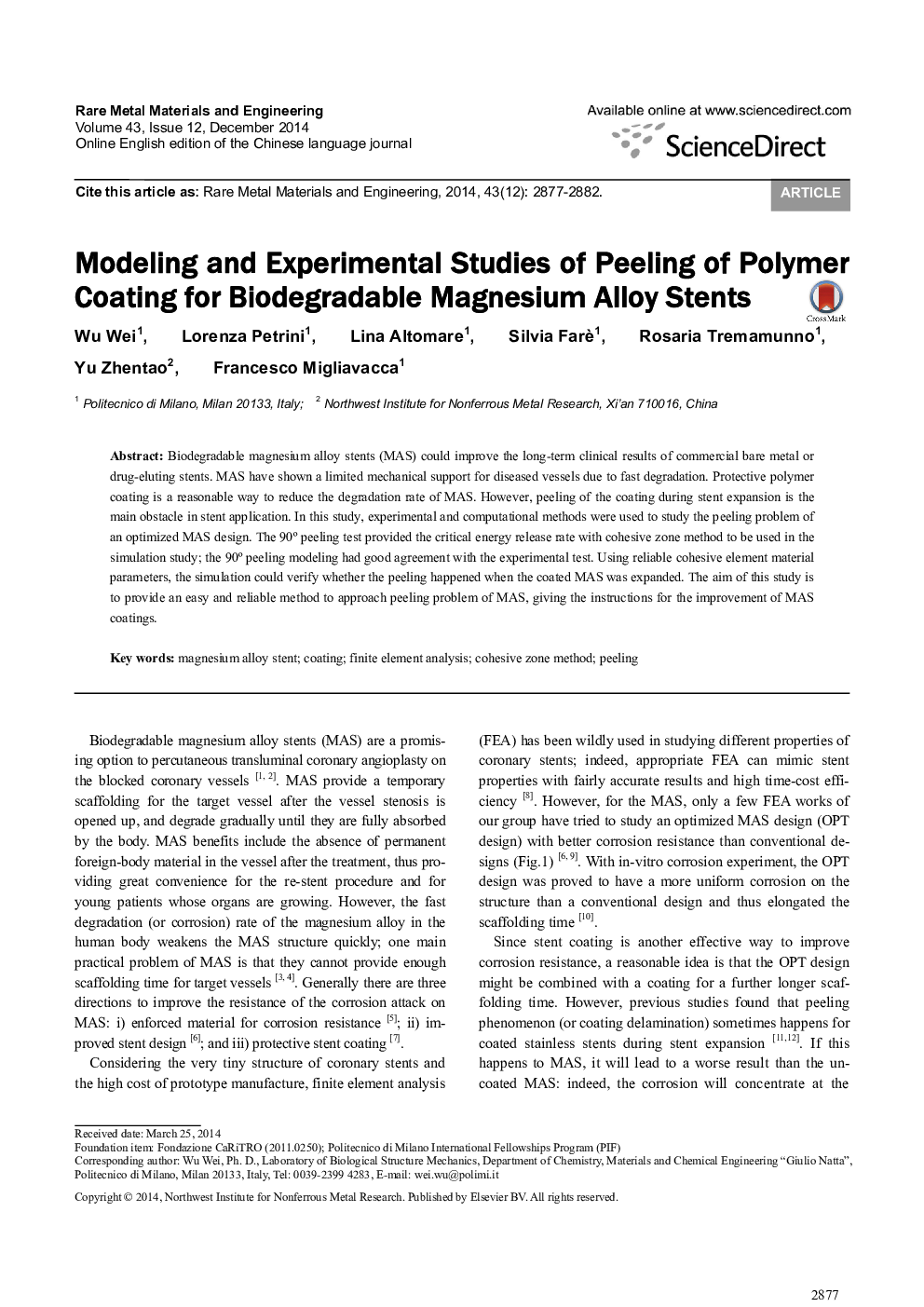| Article ID | Journal | Published Year | Pages | File Type |
|---|---|---|---|---|
| 814649 | Rare Metal Materials and Engineering | 2014 | 6 Pages |
Biodegradable magnesium alloy stents (MAS) could improve the long-term clinical results of commercial bare metal or drug-eluting stents. MAS have shown a limited mechanical support for diseased vessels due to fast degradation. Protective polymer coating is a reasonable way to reduce the degradation rate of MAS. However, peeling of the coating during stent expansion is the main obstacle in stent application. In this study, experimental and computational methods were used to study the peeling problem of an optimized MAS design. The 90° peeling test provided the critical energy release rate with cohesive zone method to be used in the simulation study; the 90° peeling modeling had good agreement with the experimental test. Using reliable cohesive element material parameters, the simulation could verify whether the peeling happened when the coated MAS was expanded. The aim of this study is to provide an easy and reliable method to approach peeling problem of MAS, giving the instructions for the improvement of MAS coatings.
